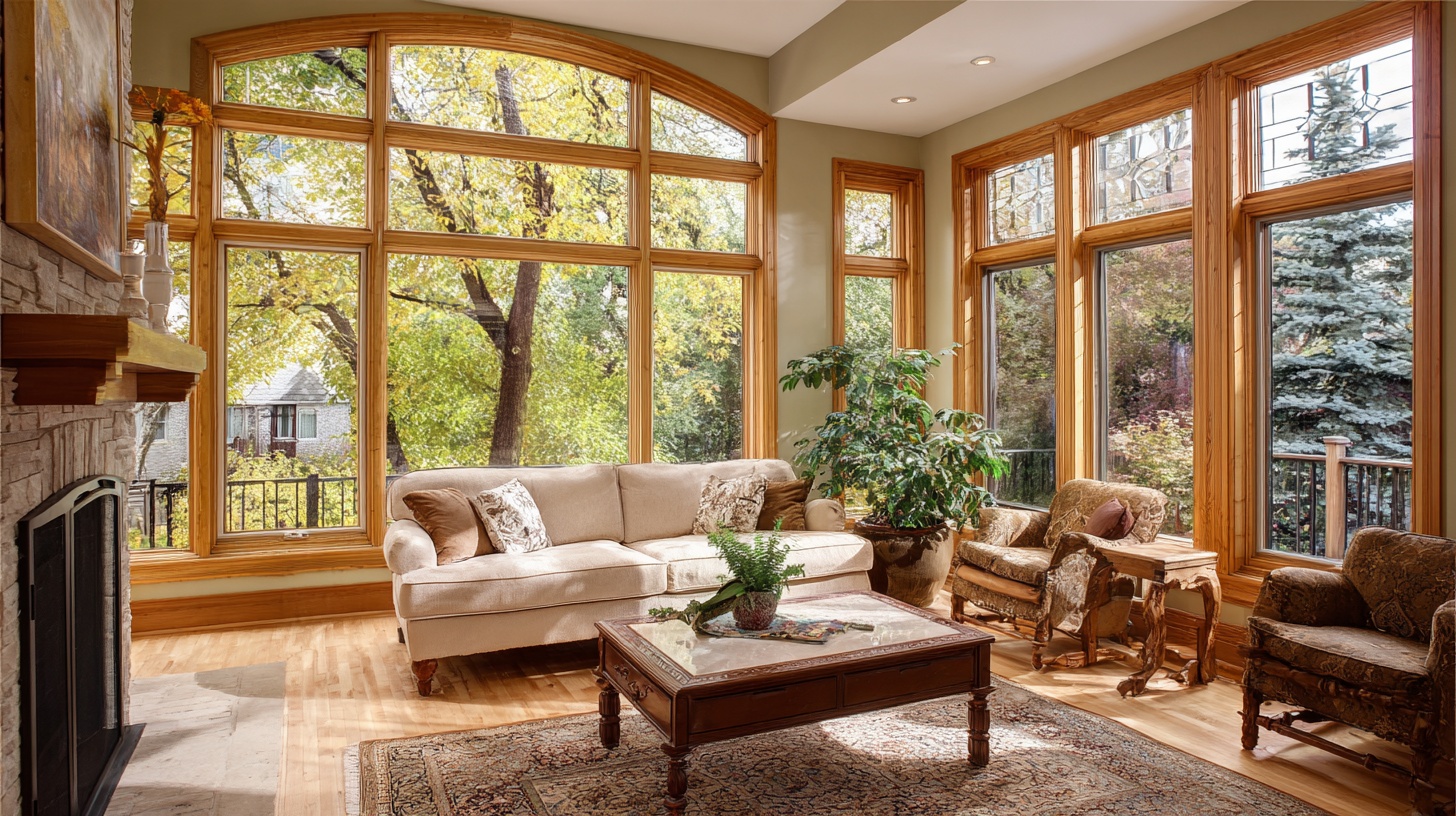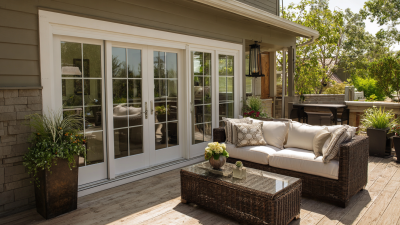How Energy-Efficient Windows and Doors Transform Your Home's Climate Control
In today's quest for energy efficiency, the transformation brought about by modern windows and doors cannot be overstated. According to the U.S. Department of Energy, approximately 30% of a home's heating and cooling energy is lost through inefficient windows and doors. By investing in high-quality, energy-efficient options, homeowners can significantly enhance their home's climate control, leading to reduced energy bills and increased comfort.

Studies indicate that upgrading to Energy Star certified windows can save homeowners an average of $100 to $500 annually on energy costs, demonstrating the substantial impact of such upgrades. Moreover, these improvements not only contribute to monetary savings but also bolster property value and reduce carbon footprints, making energy-efficient windows and doors a vital consideration for today's environmentally conscious homeowner.
Energy-Efficient Windows: Key Features That Enhance Climate Control
 Energy-efficient windows and doors play a critical role in enhancing climate control within our homes. One of the key features of these installations is their ability to significantly reduce heat transfer. According to the U.S. Department of Energy, windows are responsible for approximately 25-30% of residential heating and cooling energy use. By utilizing Low-E (low emissivity) coatings, which reflect infrared light while allowing visible light to pass through, these windows can maintain a more stable indoor temperature. This can lead to energy savings of up to 12% in heating costs and up to 10% in cooling costs, making them a smart investment for homeowners looking to improve energy efficiency.
Energy-efficient windows and doors play a critical role in enhancing climate control within our homes. One of the key features of these installations is their ability to significantly reduce heat transfer. According to the U.S. Department of Energy, windows are responsible for approximately 25-30% of residential heating and cooling energy use. By utilizing Low-E (low emissivity) coatings, which reflect infrared light while allowing visible light to pass through, these windows can maintain a more stable indoor temperature. This can lead to energy savings of up to 12% in heating costs and up to 10% in cooling costs, making them a smart investment for homeowners looking to improve energy efficiency.
Another important aspect is the insulation provided by energy-efficient doors and windows. High-quality frames, such as those made from fiberglass or thermally broken aluminum, coupled with advanced double or triple glazing, help minimize air leakage and thermal bridging. The National Fenestration Rating Council (NFRC) reports that well-insulated windows can reduce annual energy bills by about $400 on average—a substantial figure that underscores their value. Additionally, improved insulation not only contributes to lower energy costs but also enhances indoor comfort by minimizing drafts and uneven temperatures, ultimately transforming your living environment into a more pleasant and energy-efficient space.
The Role of Doors in Maintaining Indoor Temperature Stability
Doors play a crucial role in maintaining the indoor temperature stability of your home. They serve as barriers between the climate-controlled interior and the outside elements. When equipped with energy-efficient features, such as proper insulation and weather stripping, doors can significantly reduce heat loss during winter and keep cool air inside during summer. This not only enhances comfort but also lowers energy bills by minimizing the reliance on heating and cooling systems.
To maximize the efficiency of your doors, consider these tips: First, choose solid-core doors over hollow-core options, as they provide better insulation. Second, install a door sweep at the bottom to prevent drafts from entering, which can compromise your home's overall temperature. Lastly, ensure that the door frame is properly sealed and insulated; applying caulk around the edges can prevent unwanted air leaks.
Incorporating energy-efficient doors into your home is a smart investment for both comfort and utility savings. By focusing on door design and installation, homeowners can create a more stable indoor environment, making it easier to maintain the desired temperature year-round.
| Dimension | Description | Energy Savings (%) | Temperature Stability (°F) |
|---|---|---|---|
| Double Glazing | Two panes of glass with a gap that improves insulation. | 30% | 5°F |
| Low-E Coatings | Reflects infrared light while allowing visible light to enter. | 25% | 6°F |
| Argon Gas Fill | Inert gas between panes that reduces heat transfer. | 20% | 4°F |
| Custom Door Sealing | Enhanced sealing around doors to prevent drafts. | 15% | 3°F |
| Weatherstripping | Material applied around frames to minimize air leaks. | 10% | 2°F |
Comparative Analysis: Traditional vs. Energy-Efficient Windows and Doors
When comparing traditional windows and doors to energy-efficient alternatives, the benefits are quite striking. According to the U.S. Department of Energy, energy-efficient windows can reduce energy bills by up to 15% annually. Traditional window systems, typically made with single-pane glass, allow a significant amount of heat transfer, leading to increased energy consumption for heating and cooling. In contrast, energy-efficient models utilize advancements like multi-pane glazing and low-emissivity (Low-E) coatings to minimize thermal exchange, maintaining a more stable indoor climate.

Furthermore, the National Fenestration Rating Council (NFRC) reports that energy-efficient doors can enhance a home’s insulation, contributing to overall energy savings. Homes fitted with ENERGY STAR certified windows can save as much as $500 a year, depending on the climate zone. This shift not only translates into lower energy costs but also boosts the home’s resale value, as modern buyers increasingly prioritize energy performance. The comparative analysis illustrates that investing in energy-efficient windows and doors is not merely an aesthetic upgrade but also a strategic decision for long-term comfort and sustainability.
Exploring the Long-Term Savings of Energy-Efficient Installations
Energy-efficient windows and doors play a crucial role in enhancing a home’s climate control while also offering significant long-term savings. According to the U.S. Department of Energy, energy-efficient windows can reduce energy bills by up to 15% annually, translating to savings of approximately $200 to $300 each year for an average household. By minimizing heat transfer, these installations help maintain consistent indoor temperatures, reducing the reliance on heating and cooling systems and consequently lowering energy consumption.
In addition to immediate financial benefits, energy-efficient installations increase a home’s overall value. A report by the National Association of Realtors indicates that homes with energy-efficient upgrades can sell for up to 10% more than comparable homes without such features. Moreover, as energy costs continue to rise, the demand for energy-efficient homes is expected to increase, reinforcing the idea that these improvements are not just an expense but a strategic investment. By choosing energy-efficient windows and doors, homeowners can enjoy a comfortable living environment while contributing to sustainable energy consumption and reaping long-lasting financial rewards.
Environmental Impact: How Upgraded Windows and Doors Reduce Your Carbon Footprint
Upgrading to energy-efficient windows and doors can significantly reduce your home’s carbon footprint. According to the U.S. Department of Energy, heat gained and lost through inefficient windows can account for 25-30% of residential heating and cooling energy use. By installing ENERGY STAR® certified products, homeowners can lower their energy consumption, leading to a decrease in greenhouse gas emissions. For example, replacing single-pane windows with double or triple-glazed options can reduce energy loss by up to 50%.

Additionally, a report from the American Council for an Energy-Efficient Economy (ACEEE) highlights that for every dollar spent on energy-efficient upgrades, homeowners can save about $2 in energy costs over the lifespan of the windows and doors. This not only makes a substantial economic case for these upgrades but also contributes to environmental preservation. By making these changes, homeowners play a vital role in reducing overall energy demand, thus supporting efforts to combat climate change and decrease reliance on fossil fuels that drive global warming.

